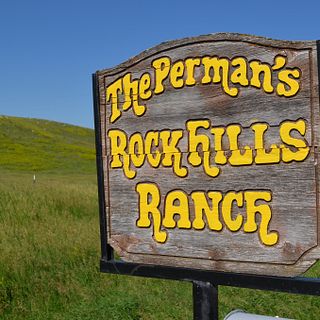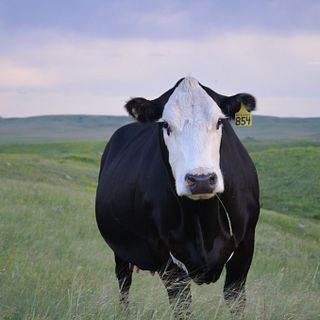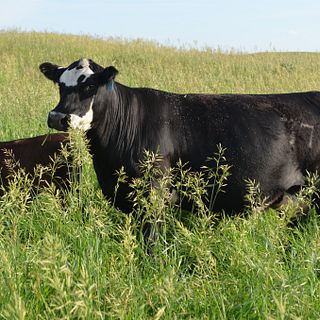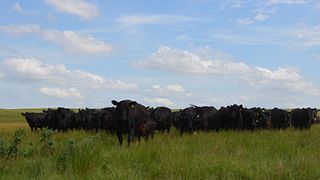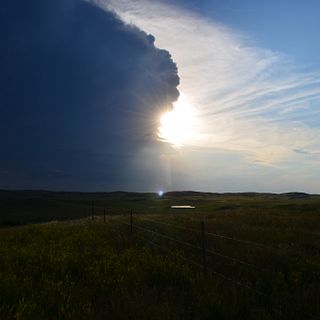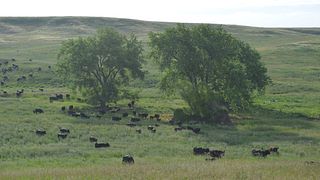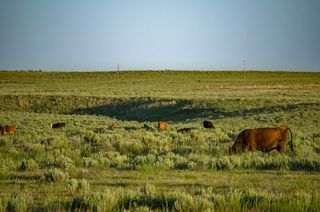
- Home
- Winner Gallery
- Inductees
- Rock Hills Ranch
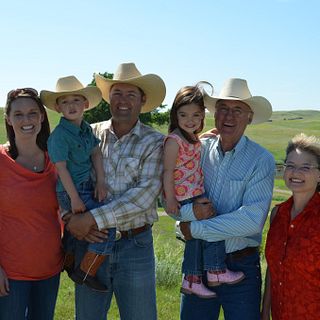
Year Inducted: 2014
Region VII
Lowry, South Dakota
*National Winner
The Perman family and Rock Hills Ranch of Lowry, S.D., were honored today as one of seven regional Environmental Stewardship Award Program (ESAP) winners. The award, which is sponsored by Dow AgroSciences, USDA Natural Resources Conservation Service (NRCS), U.S. Fish and Wildlife Service, National Cattlemen’s Beef Association (NCBA) and the National Cattlemen’s Foundation, is presented to farmers and ranchers who are working hard to protect America’s natural resources.
“Rock Hills Ranch is without a doubt one of the very top operations that I have been privileged to tour and interact with. Lyle and his wife Garnet have established a truly sustainable ranching operation, as they have not only made it through the bottleneck of generational turnover with Lyle’s parents, but now with their own son, Luke, and his family,” said Barry H. Dunn, Ph.D., Director of South Dakota State University Extension. “Lyle is a very well educated, thoughtful, articulate, analytical, and is an extremely hard worker. These attributes have resulted in not only a very well managed ranch, but Lyle is also a respected leader in his community and state.”
The Permans’ goal at Rock Hills Ranch is to leave the land better than they found it, implementing improvements such as rotational grazing, water developments, cross fencing, and the use of cover and residual crops for grazing. This benefits not only the cattle operation, but the Permans’ focus on wildlife diversity, grassland health, and their desire to maximize the potential of the natural resources in their care. Because of this care, the Permans have been able to host pasture walks and ranch safari tours, implement pay hunting due to increased wildlife diversity, and offer internships to college students majoring in range management.
“Our goal is not to sustain what we’ve got. Our goal is to regenerate what there was at one time on this ranch. So we’re not content with what we’ve got,” said Lyle Perman of Rock Hills Ranch. “We’re always looking for ways to improve it, and, to restore what at one time was here.”
The Perman family’s responsible management practices apply not only to their land management but also their succession plan. Three years ago, Lyle and Garnet leased the ranch, equipment and cows to their son, Luke, and his wife, Naomi. This non-typical arrangement allows Luke to make most of the decisions about the ranch. Lyle, who also operates an insurance business on the ranch, works for Luke, and they confer on managing and marketing, giving Luke and Naomi responsibility for the ranch eases the transition.
The Permans are conscious of seasonal usage of pastures. If a pasture is used in early June one year, they will aim to graze it during a different stage of the growing season the next year. They also utilize intensive grazing if they are trying to alter a plant community. For example, if Kentucky bluegrass or western snowberry have taken over a certain area, they will restrict cattle to that small area to encourage hoof action to break up the undesirable plants and create an environment for more desirable plants to take hold.
Annually, the Permans plant four food plots for wildlife, and plant and maintain several shelter belts. They have planted about 120 farmed acres back to a grass and forb mix and plan to add another 230 acres this year. Deer and pheasants use these for rearing young and protection from predators. Because pheasants and ducks nest in the hay fields, the Permans delay cutting until the chicks and ducklings are old enough to safely move away from machinery. Nesting schedules also affect their grazing plan designs by allowing adequate nesting cover in strategic areas around the ranch for upland birds and waterfowl.
The role pollinators play in the ranch’s ecosystem also is considered. The Permans depend on bees to pollinate production, as a result they don’t spray for alfalfa weevils. They also recognize the value all insects provide to the diet of the ground-nesting birds on the ranch. The family also considers the importance of plants like milkweed for the Monarch butterfly.
“In Sand County Almanac, Aldo Leopold noted that ‘conservation is a state of harmony between men and land,’” said Kurt Forman, coordinator, South Dakota Partners for Fish and Wildlife. “The proven record of stewardship at Rock Hill Ranch is certainly emblematic of Leopold’s words and vision.”
